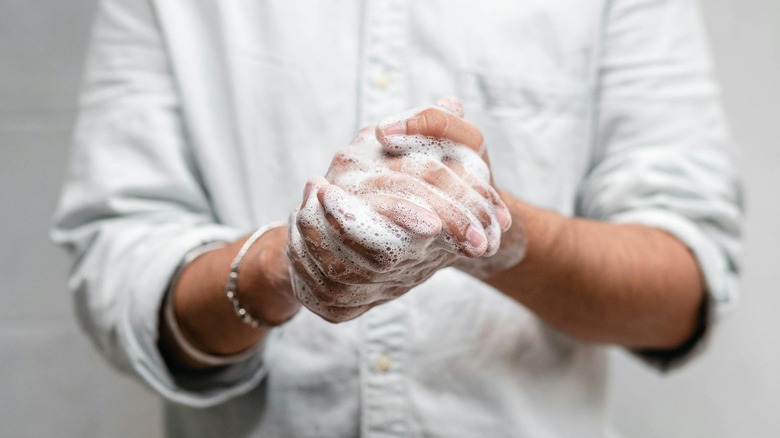What Is The Difference Between Sanitizing Vs. Disinfecting?
Most people think that sanitizing and disinfecting are the same thing, but the truth is, they are quite different — and sanitizers and disinfectants should be used differently. So, what is the difference between sanitizing vs. disinfecting? Here, we break it down.
What Does Sanitizing Do?
Sanitizers are meant to quickly reduce the number of disease-causing bacteria by 99.999% on inanimate objects in a short amount of time. Sanitizing basically means the same thing as cleaning, and is used to quickly clean things such as dishes, hard surfaces, and skin. Most sanitizing cleaners are used to clean areas that have come in contact with food, like countertops, dishes, cooking utensils, and tabletops. We also use sanitizer to clean bacteria from our skin by using antibacterial soaps and hand sanitizers. While sanitizers help to kill bacteria, they do not remove all germs. That's why the CDC recommends handwashing when possible as opposed to just using hand sanitizer.
What Does Disinfecting Do?
A disinfectant is an agent that frees inanimate objects from infection by destroying microorganisms, but takes around 10 minutes to fully work. Disinfectants kill 100% of most bacteria-causing microorganisms, but can only be used on objects, and should never be used on skin. Disinfectants can cause allergic reactions and irritation when used on skin. Disinfection should leave a surface highly unlikely to transmit infection or cause disease. Disinfectants should be applied to floors, walls, toilets, bed frames, sinks showers, bathtubs, chairs, and whirlpool spas.
What Is the Difference Between Sanitizers and Disinfectants?
Sanitizers are used at much lower concentrations than disinfectants, making them safe to use on food-safe surfaces and skin. Disinfectants are used at concentrations that can leave strong, germ-killing residue that is not food-safe and should not come in contact with skin.
